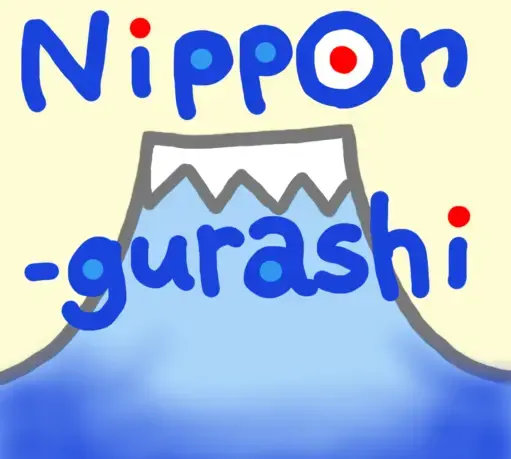Have you heard of the word, food samples? It is also known as fake food, food figures or food models in English. They are called 食品サンプル (shokuhin sampuru = food sample) in Japan, where they are originated from.
I always like to look at high-quality food samples that were carefully made one by one by craftsmen because they are artworks to me (and the realistic looking food stimulates my appetite!).
I’d like to talk about food samples, not the ones mass produced at a factory, but hand made by craftsmen in Japan.
(目次=Table of contents)
What are Food Samples in the first place?
If you have been to Japan, you may have seen food sample displays at a restaurant. Food samples look delicious, but they are not edible since they are not real food. They are replicas made from plastic, wax, resin or similar material, so they never get rotten. A display at a restaurant is not the only way of using food samples. They are also used as decorations on accessories, key chains, magnets and smartphone cases. Additionally, there are unique products of food samples such as a bookmark, container for accessories, pen stand and etc.
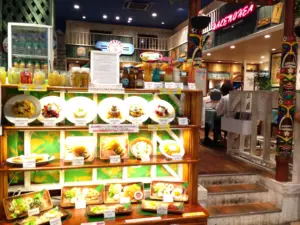
The Origin of Japanese Food Samples
It is said that food samples were invented around the end of the Taisho period and the beginning of the Showa period (from 1926 to 1935). Unfortunately, there is no record about the origin of food samples, and some people say that food samples were invented by multiple researchers and craftsmen in different places at roughly the same time in Japan.

Why Do Restaurants in Japan Display Food Samples?
One of the reasons that food samples became common in Japan was the change of Japanese people’s lifestyle during the period of rapid economic growth (1955~1973). Restaurants at department stores have seemingly changed the role of food samples. Department stores were of special significance for citizens at that time, and having a meal at a restaurant inside of a department store was regarded as a status symbol.
There are different types of restaurants at department stores in Japan now. Customers can eat not only Japanese food such as tempura, sushi, sukiyaki, unagi(eel), or soba(buckwheat noodles), but also food from other countries. However, restaurants at department stores in the period of rapid economic growth mainly served Western dishes. Strictly speaking, they are Japanized Western dishes. For example, オムライス(omuraisu = omelet and rice), カレーライス*¹ (karē raisu = curry and rice), ミートソーススパゲティ(mīto supagetti = spaghetti with meat sauce) and カツレツ (katsuretsu = cutlet) were dishes that they served. Many Japanese people could not tell what kind of food these Western dishes were by just looking at a menu showing only the names of dishes, and it was difficult for workers at restaurants to explain the details of each dish to every customer.
*¹カレーライス (karē raisu) was called as ライスカレー(raisu karē) at the time in Japan. Although the origin of curry is India, Japanese people regarded curry as a Western dish since curry and curry powder were introduced to Japan via the U.K.
Displaying food samples of the dishes that were served at a restaurant solved issues for customers and workers. Customers could guess what kind of food by looking at food sample displays and workers could save their time. That is why the display of food samples at a restaurant’s entrance was of great help, and as the number of department stores increased in Japan, so did the demand of food samples for displays. The success of Western food restaurants at department stores influenced other types of restaurants and the use of food samples for displays became common in Japan.
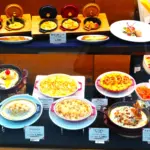
What Kind of Restaurants Have Displays of Food Samples?
It depends on the restaurant owner whether they use displays of food samples or not, but there is a tendency that fancy restaurants usually don’t have food sample displays. It is said that fancy restaurants often change their menus depending on the season and the availability of ingredients on the day. Customers would complain to a restaurant if they served dishes that look very different from the displays. On the other hand, restaurants which hardly change their menus or chain restaurants with fixed regular menus have a merit to use displays of food samples. If you are planning to visit Japan someday, it’s better to know that restaurants with food sample displays tend to be reasonable! (Please take note that it’s not 100% accurate).

Decline of the Demand for Food Samples
It is unfortunate that the demand of food samples for restaurants has decreased since the 2000s because of the improvement of photo printing technology and the high cost of making food samples. Generally speaking, it is said the cost of a food sample is about 7 to 10 times more than the actual food at a restaurant. For instance, if the price of a soft serve is 500 yen, the cost of a food sample of the soft serve is about 3,500~5,000 yen. As I mentioned, high-quality food samples are handmade by artisans, so it is difficult to lower the cost of food samples. It is no wonder restaurant owners who want to reduce costs prefer using photos to food samples. They can save not only the cost of food samples, but also transportation fees and space for displays at their restaurants.
Even though the demand of food samples for restaurants is decreasing, there are still a lot of restaurants that use food sample displays in Japan. Personally, I prefer checking food sample displays to checking a menu with photos of dishes when I try to find a place to eat. It is common that a restaurant in Japan has a menu book outside so that customers can check it before entering. Looking at food sample displays is much quicker than flipping through the menu page by page. Besides, food sample displays are useful as a reference when I want to know the portion of food since they are made to be the same size as the actual dishes.
Is There a Way for Food Samples to Survive in the Future?
At present, the food samples industry is making products for individual customers who are not related to the restaurant business in order to expand sales channels. Unlike food samples that are only used for restaurant displays, products for personal use have a wide range of uses. The items I mentioned in the beginning of this article such as key chains, smartphone cases or bookmarks are good examples. I hope that the number of individual customers will increase in the future and Japan’s food sample culture will last for a long time.
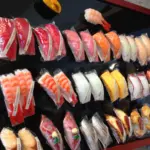
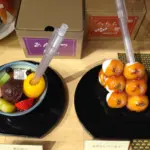
Unique Food Samples for Personal Use
There are a lot of nice and unique products if you visit food sample shops in Japan. There are some shops which sell food samples in Tokyo, and my favorite one is 元祖食品サンプル屋(Ganso Shokuhin Sample-ya) running by IWASAKI CO., LTD. The company has two stores in Tokyo. One is in the shopping mall of Tokyo Sky Tree and the other one is located in Kappabashi area near Asakusa.
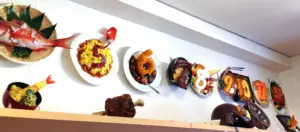

Access to 元祖食品サンプル屋(Ganso Shokuhin Sample-ya) in Tokyo
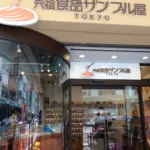
- ・Kappabashi store
- Address: 3-7-6 Nishi Asakusa, Taito-ku, Tokyo
- Business hours: 10:00 a.m.~5:30 p.m.
- ・Tokyo Skytree Town Solamachi store
- Address: East Yard on the 4th floor of Tokyo Solamachi, a commercial facility in Tokyo Skytree
- Business hours: 10:00 a.m.~ 9:00 p.m.
I recommend you visit a food sample shop if you like Japanese food and are looking for a unique souvenir from Japan!
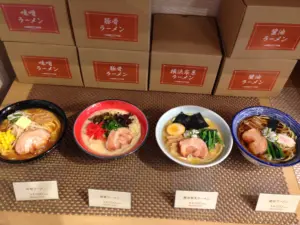
You Can Make Your Own Food Samples
It’s nice to buy food samples made by professional craftsmen, but you can make food samples by yourself at workshops in Tokyo, Osaka and Gifu. As far as I searched, there are workshops where you can make food samples in Saitama, Kanagawa, Shizuoka, Aichi, Mie, Hyogo, and Fukuoka as well (there may be workshops in other prefectures in Japan). The option of food samples you can make at workshops is limited, but you can get both a food sample and an unusual experience! If you have a plan to visit Tokyo and want to try making your own food samples, you can make an online reservation at the workshop of 元祖食品サンプル屋(Ganso Shokuhin Sample-ya).
https://www.ganso-sample.com/en/shop/kappabashi/experience/ (English website)
“I’m curious about making food samples but I cannot go to Japan!”
Please don’t worry! DIY food sample kits are available online so you can make your own food samples at home. The difficulty of a DIY kit depends on the dish or drink, but DIY kits usually contain some complete parts, and you don’t need to make it all by yourself. Please note that you need to use hot water in the process of making food samples, and children under 14 years old should be under adult supervision.
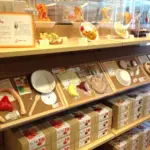
I’m afraid that there is one drawback about DIY food sample kits. No matter how much skill you have, the quality of food samples you can make with DIY kits is inferior to the ones that professionals make in Japan because of the difference of materials. Even if there is a little difference in quality, I think making food samples by yourself is more interesting than just buying one at a shop. If you are interested in DIY food sample kits, please check the links below!
DIY Food Sample Kit, Vol.9, Soy Sauce Ramen (Amazon Link)
DIY Food Sample Kit, Strawberry Parfait (Amazon Link)

References
Ganso Shokuhin Sample-ya (in Japanese) https://www.ganso-sample.com/about/
Plenus “kome” Academy (in Japanese) https://www.plenus.co.jp/kome-academy/roots/public.html
Food Replica Association Japan (in Japanese) https://www.frajschool.jp/fraj
